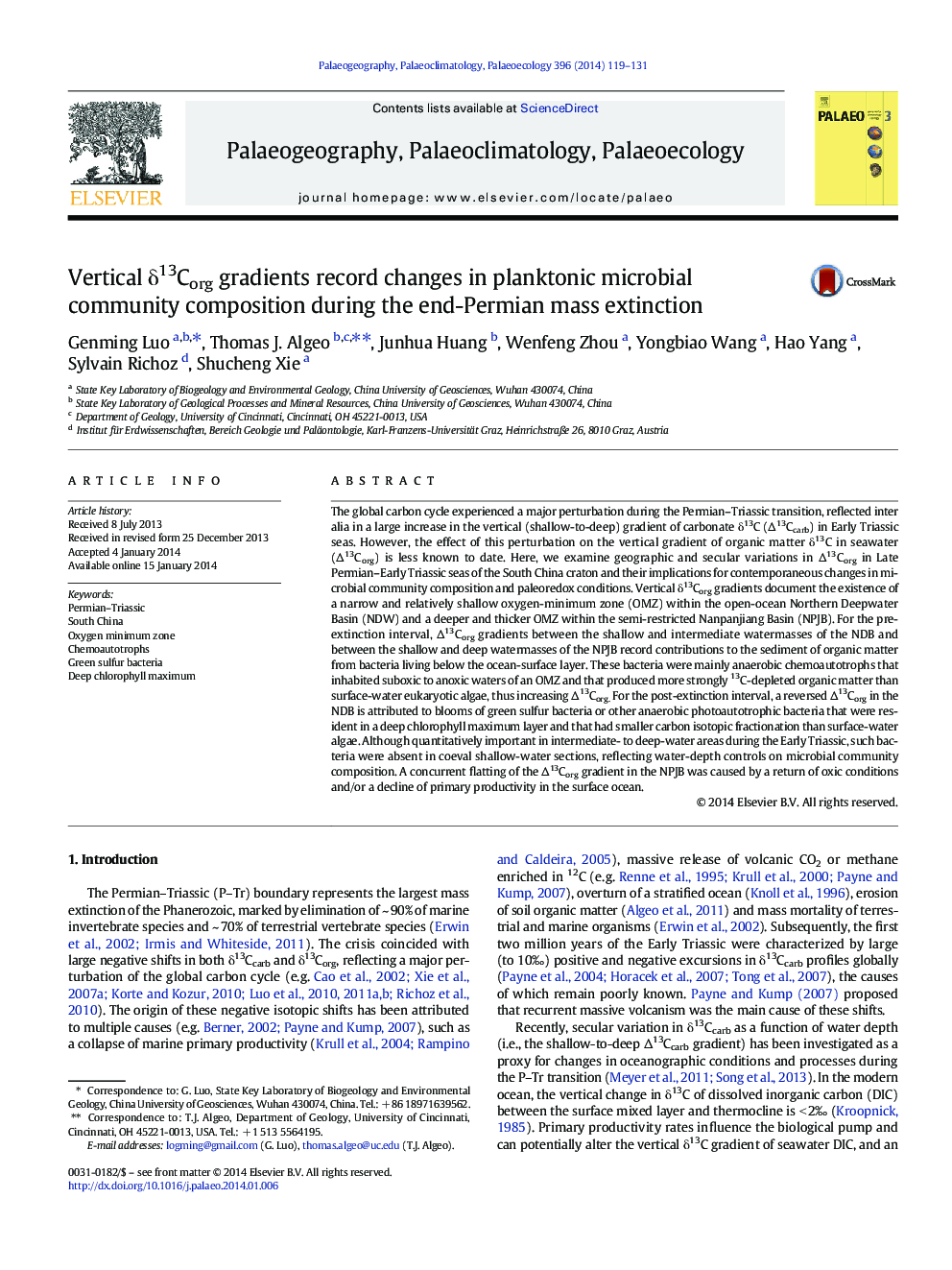| کد مقاله | کد نشریه | سال انتشار | مقاله انگلیسی | نسخه تمام متن |
|---|---|---|---|---|
| 4466411 | 1622194 | 2014 | 13 صفحه PDF | دانلود رایگان |

• Variation in δ13Corg was controlled by planktonic microbial community composition.
• Vertical δ13Corg gradients provide information about watermass redox conditions.
• Locally large gradients reflect the activity of deepwater anaerobic chemoautotrophs.
• Reduced gradients after the mass extinction were due to blooms of green sulfur bacteria.
• Declining marine primary productivity probably accompanied microbial community changes.
The global carbon cycle experienced a major perturbation during the Permian–Triassic transition, reflected inter alia in a large increase in the vertical (shallow-to-deep) gradient of carbonate δ13C (Δ13Ccarb) in Early Triassic seas. However, the effect of this perturbation on the vertical gradient of organic matter δ13C in seawater (Δ13Corg) is less known to date. Here, we examine geographic and secular variations in Δ13Corg in Late Permian–Early Triassic seas of the South China craton and their implications for contemporaneous changes in microbial community composition and paleoredox conditions. Vertical δ13Corg gradients document the existence of a narrow and relatively shallow oxygen-minimum zone (OMZ) within the open-ocean Northern Deepwater Basin (NDW) and a deeper and thicker OMZ within the semi-restricted Nanpanjiang Basin (NPJB). For the pre-extinction interval, Δ13Corg gradients between the shallow and intermediate watermasses of the NDB and between the shallow and deep watermasses of the NPJB record contributions to the sediment of organic matter from bacteria living below the ocean-surface layer. These bacteria were mainly anaerobic chemoautotrophs that inhabited suboxic to anoxic waters of an OMZ and that produced more strongly 13C-depleted organic matter than surface-water eukaryotic algae, thus increasing Δ13Corg. For the post-extinction interval, a reversed Δ13Corg in the NDB is attributed to blooms of green sulfur bacteria or other anaerobic photoautotrophic bacteria that were resident in a deep chlorophyll maximum layer and that had smaller carbon isotopic fractionation than surface-water algae. Although quantitatively important in intermediate- to deep-water areas during the Early Triassic, such bacteria were absent in coeval shallow-water sections, reflecting water-depth controls on microbial community composition. A concurrent flatting of the Δ13Corg gradient in the NPJB was caused by a return of oxic conditions and/or a decline of primary productivity in the surface ocean.
Journal: Palaeogeography, Palaeoclimatology, Palaeoecology - Volume 396, 15 February 2014, Pages 119–131